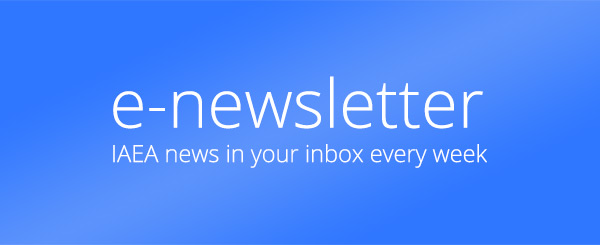Isotope-enabled Models for Improved Estimates of Water Balance in Catchments
Closed for proposals
Project Type
Project Code
F31005CRP
2207Approved Date
Status
Start Date
Expected End Date
Completed Date
7 March 2023Participating Countries
Description
The use of stable isotope tools to identify the main flow paths and residence times of both surface and ground waters has been expanded to improve the simulated components of the water balance model at several scales: from small catchment areas to larger hydrological basins. The IAEA’s Isotope Hydrology Section has developed, in cooperation with various partners, the IAEA Water Balance Model with Isotopes (IWBMIso), which aims to promote and expand the use of common isotope tracers to obtain more precise estimates of the various water balance components and water fluxes in a range of climatic and hydrological settings. Once the model has been fully tested in different selected catchments and scenarios, which is the main objective of this CRP, it can be routinely incorporated into future technical cooperation projects dealing with isotope hydrology and water resources management.
Objectives
To improve capability and expertise among Member States in the use of environmental isotopes to better assess impacts of climate change on water resources availability and sustainability.
Specific objectives
Initiate/consolidate monthly or higher-frequency monitoring of stable isotopes in precipitation, rivers, shallow groundwater and wetlands using available laser isotope analysers in Member States.
Setup and apply isotope-enabled water balance model by using present-day precipitation isotope data in selected catchments.
Develop/improve scenario analysis of impacts of climate change on water resources availability and sustainability using calibrated and validated isotope-enabled water balance models
Improve local/regional expertise in the development and application of isotope-enabled water balance models for better water resources management
Initiate/consolidate monthly or higher-frequency monitoring of stable isotopes in precipitation, rivers, shallow groundwater and wetlands using available laser isotope analysers in Member States.
Setup and apply isotope-enabled water balance model by using present-day precipitation isotope data in selected catchments.
Develop/improve scenario analysis of impacts of climate change on water resources availability and sustainability using calibrated and validated isotope-enabled water balance models
Improve local/regional expertise in the development and application of isotope-enabled water balance models for better water resources management
Impact
In this CRP, project participants shared their unique experience on model selection, modelling objectives, data collection and modelling procedure. The IAEA, through the development of the collaboration in water resource management and isotopic application advanced the best practice approach in isotope-enabled modelling to provide a consistent process and improve interpretation and suitability of the isotope-enabled modelling results. The CRP results in the TECDOC where the best practices in isotope-enabled modelling for water resource management cover different steps of modelling such as setting modelling objectives, identifying data sources and collecting data, provision of quality assurance of the data and understanding its limitations, model selection, different calibration approaches, and performance criteria. This in turn will improve model capabilities to forecast impacts of climate and other changes on freshwater availability and sustainability as well as isotope-based assessment and management of water resources in Member States of the IAEA. Isotope-enabled hydrological models can provide the following information for decision makers in water resource management. To continue the isotope-enabled modelling direction, the IAEA will organise the training course for CPs on hydrological and isotope-enabled models (September 2023). Results of CRP will be used in the TC projects. Particularly, isotope-enabled modelling was included in a new design of the regional European TC project, Burundi TC project and considered in other projects.
Relevance
The scientific and hydrological results of the CRP clearly demonstrated that the recent developments in data collection, data interpretation, modelling and use of the modelled results. The CRP has advanced data interpretation and modelling to be ready transferred to counterparts involved in both CRPs and TC projects. Water balance modelling often involves the use of model parameters that are difficult to measure or estimate. Using conservative tracers such as stable water isotopes that are used to evaluate different hydrological process simulations significantly improving hydrological model performance. Furthermore, the use of isotopes offers means to restrict optimization and procedures to eliminate implausible model results and parameters combination. The IAEA has been exploring the practice of its Global Network of Isotopes in Precipitation (GNIP) and Global Network of Isotopes in Rivers (GNIR) data in different hydrological and climate models for application that can be used to support the water resources management in basins around the globe.

